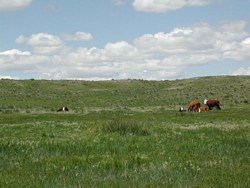Thanks to Terry Seyden for this find (so glad you’re back!).
Putting lawsuits before results: Environmental groups suing over timber sale need to collaborate
Missoulian editorial | Posted: Sunday, October 2, 2011 8:00 am
http://missoulian.com/news/opinion/editorial/article_f76db5d8-eb93-11e0-af9c-001cc4c002e0.html
Nearly everyone – environmental groups, timber companies, private landowners and public lands agencies – would agree that land management decisions are best made outside the courtroom. Years of bitter legal disputes have demonstrated that the vast majority of problems are best solved out of court, so forest lands can be managed in a more timely, efficient, and less costly manner.
This has been especially apparent in Montana, where a relatively new collaborative approach is increasingly gaining traction – and being watched carefully by others hoping to copy its success.
By bringing to one table all those with a vested interest in forest land management, collaboration has significantly cut down on the number of lawsuits concerning the Lolo National Forest, supervisor Debbie Austin told the Missoulian editorial board last week. What’s more, she said, it results in better management decisions.
But not everyone is on board. Certain environmental groups remain stuck on the old way of getting their way. Apparently, they continue to favor lawsuits over a seat at the table.
Earlier this month, several environmental groups filed suit against the Forest Service over a timber sale near Seeley Lake. The Alliance for the Wild Rockies, Friends of the Wild Swan, Montana Ecosystem Defense Council and Native Ecosystems Council say the Colt Summit Forest Restoration and Fuels Reduction Project should have included a full environmental impact statement, and that the statement’s results should be compared to the provisions in the National Forest Management and National Environmental Policy acts. They also argue that the project ignores the potential impact on wildlife.
The groups involved in the project’s planning, of course, beg to differ. The Wilderness Society, for one, believes the environmental analysis performed on the project is sufficient – and certainly more expeditious than a cumbersome environmental impact statement. That is especially important given the risk of wildfire to the Seeley Lake community, said Megan Birzell, a Northern Rockies forest associate for the Wilderness Society.
The project now being challenged in court would both remove roads and thin forests on more than 4,300 acres of land over five years. The specifics of the project are the direct result of much hard work, debate and problem-solving by a group of people with diverse but intersecting interests – and a test, of sorts, for the Montana Forest Restoration Committee, to see whether collaboration can trump litigation.
It ought to. Lawsuits have an important role to play in protecting public resources from bad decisions. But they should be methods of last resort, used only after all other options have been exhausted.
Unfortunately, some environmental groups may be so used to slapping lawsuits on new projects that they are missing an opportunity to solve potential problems before they become actual problems. They are rejecting an open invitation to resolve their concerns during the planning process, instead of after the fact.
Regardless of whether they win or lose in court, that’s clearly not the best way to go about protecting Montana’s public lands.
EDITORIAL BOARD: Publisher Stacey Mueller, Editor Sherry Devlin, Opinion Editor Tyler Christensen, Sales and Marketing Director Jim McGowan








